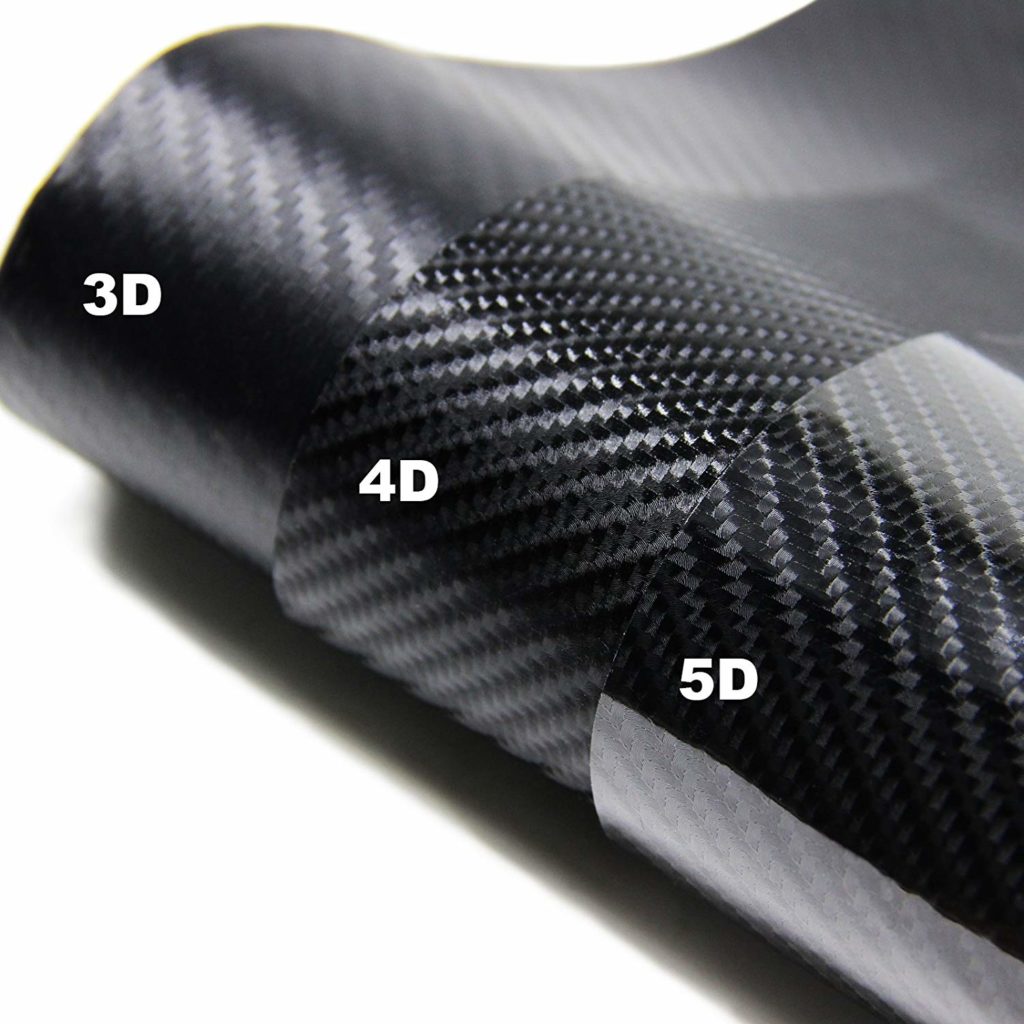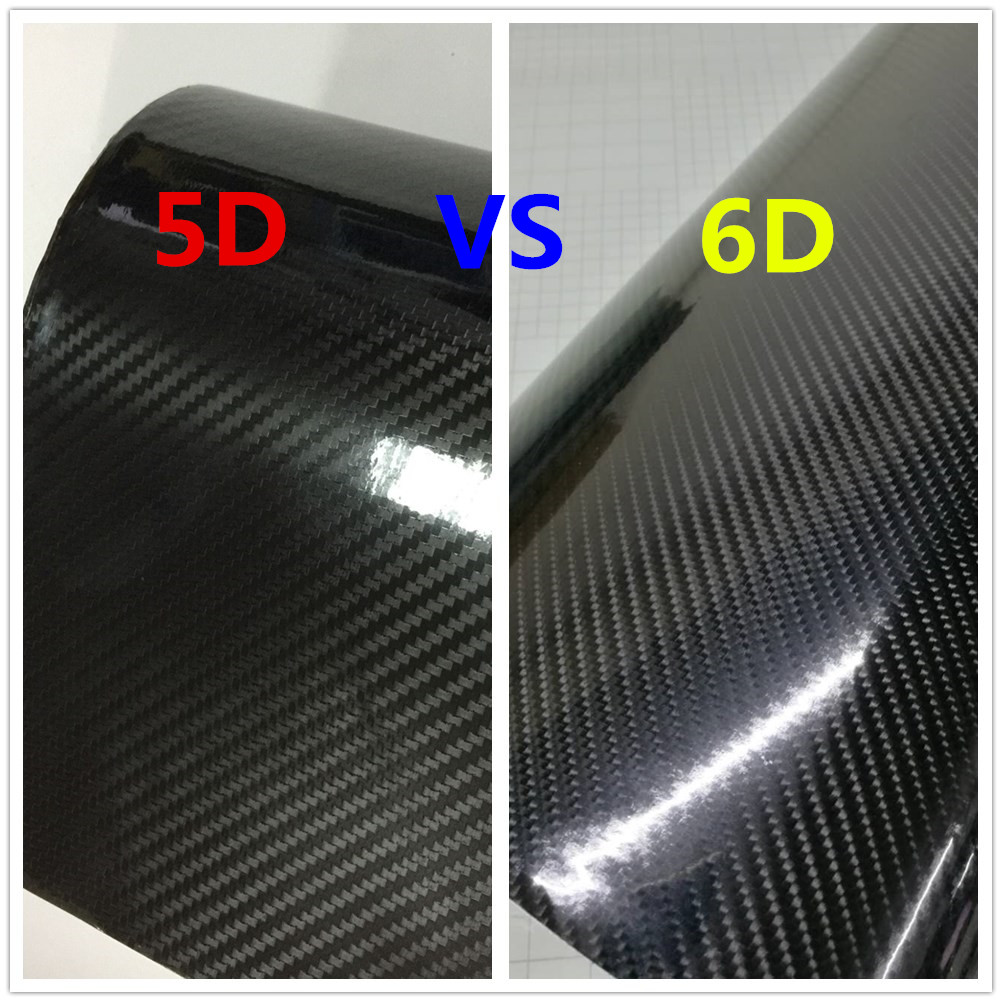
A couple of days ago, a customer of mine bought a used car. The car was nice, but you could easily see the original paint on the hood looked a little worn. Getting a new paint job would not only be expensive, but also devalue the car if he ever wanted to sell the car in the future. I introduced to him the idea of wrapping his hood with vinyl. It’s significantly cheaper than paint, and the options to customize were plenty.
One design that quickly caught his eye was the carbon fiber print. After some research, he discovered that there are several different types; which include: 3D, 4D, 5D, and 6D. From most websites it is somewhat difficult to differentiate between the four, but he was curious to find out more about each type. After some research, this is the information he found:
3D – Twill Weave Pattern with a Matte (Dry) Finish
The most basic of the four types is the 3D print. The print consists of a perpendicular, cross hatched patterns, resembling a staircase. 3D print also has a matte finish, which is the opposite of a glossy (wet or shiny) look. 3D carbon fiber is printed on the thinner (3.0mil) and thus the 3D vinyl is the most flexible and stretchable which makes it easier to install on curved surfaces. The best feature of the 3D print is the ease of use, and how forgiving it is for 1st time DIY installers.
4D – Circular Weave Pattern with a Matte / Semi-Gloss (Dry) Finish
When I first started researching carbon fiber vinyls, I assumed 3D vinyl meant “Three-Dimensional” and so I struggled to imagine what 4D and 5D would be. Then I thought what the world would 6D be like. Does 4D offer another level of realness? Does it smell different? Does it feel different? It turns out that the original manufacturers didn’t have a great naming scheme, and so the number corresponds to the vinyl’s generation. 4D is just the 4th generation of carbon fiber prints.
Like 3D carbon fiber, 4D carbon fiber comes with a matte finish. However, 4D can be considered semi-gloss, as the matte finish on the 4D has a slight shine to it but does not have the “wet” look like 5D or 6D carbon fiber. The 4D print has a swirled pattern. Instead of a perpendicular, staircase weave, 4D consists of a rounded, spiraled weave. Although it is slightly thicker than the 3D vinyl, the 4D (3.1mil) is still suitable for applying on rounded surfaces and is an all around great vinyl to work with.
5D – Twill Weave Pattern with a Glossy (wet) Finish
The 5D and the 3D share the same carbon fiber pattern. However, the 5D has an additional gloss layer. The gloss layer gives the vinyl a recognizable shine and a “wet” look. 5D and 6D bring a more real look and feel to true carbon fiber. Because of the additional gloss layer the vinyl is slightly thicker (3.4 mil), making it tougher to be applied on rounded surfaces. This will take some practice and patience to get the perfect install. I was aesthetically pleased by the look the gloss layer gave the vinyl.
6D – Circular Weave Pattern with a Glossy (wet) Finish

The relationship between 6D and 4D is the same as the one between 5D and 3D. They both share the same print, but differ in that one has a gloss layer and the other does not. The 6D carbon fiber (3.4mil) is the same thickness as the 5D. While this looks and feels like real carbon fiber it does require some practice to get a perfect laydown on the vinyl.
So now that you understand a little more about the difference in Carbon Fiber vinyls, figure out what makes most sense for you. 3D and 4D is great for wrapping more difficult surfaces. 5D and 6D is perfect for the hood or other large flat surfaces. You can mix and match if that’s your thing. or you can keep it simple and clean and go with one type. And don’t forget when laying down vinyl, a heat gun or hair dryer goes a long way in getting the perfect installation.
